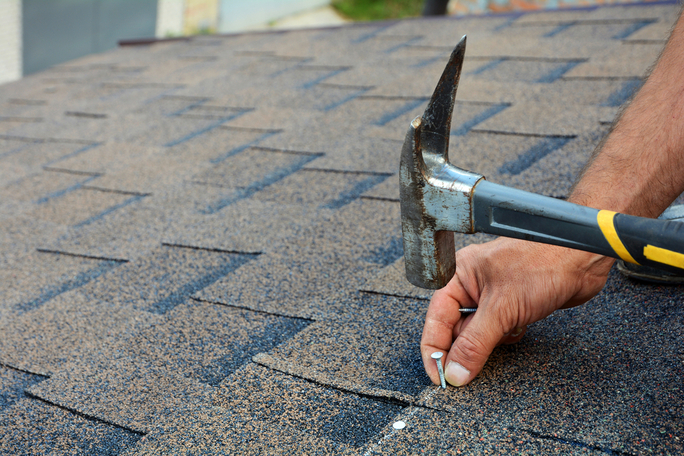Tips & Tricks

Here are a few secrets contractors have learned through years of installing roofing.
We have listed some tricks of the trade that might help you. But remember to be extremely careful when accessing a roof and always use fall protection!
Roof cleaning
Water and a rake can damage your roof, but a leaf blower works well and is safe for your roof. Blowing from the ridge downward will remove a lot of debris from your roof.
Roof sheathing
When tacking your roof sheathing in place, use a chalk line to mark where your rafters are. This will help later and makes it easier for nailing the sheathing.
Roof ventilation
Use the 1 in 150 rule or the 1 in 300 rule which can vary based on roof type. A professional contractor is your best bet for determining and installing ventilation. Most manufacturers require proper ventilation for warranties to be valid. Take your square footage of the attic floor space and divide that number by 150 (or 300). That will give you the total square footage of ventilation you need for intake and exhaust. For example, a 1,500-square-foot area divided by 150 is 10 feet. 50% of that should be intake and 50% should be exhaust.
Roof access
Ladder safety is important. This is where a lot of accidents happen because you go up and down a ladder many times in one day when working on a roof. When using a ladder, make sure to:
- Tie off your ladder to the roof so it will not slide.
- Have the ladder extend three feet above the roof edge.
- Always have both your hands on the ladder. Use a rope tied off to your tools and lift them up when you are on the top of the roof.
- Bundles of roofing shingles are heavy. Most professional roofing contractors have boom trucks or delivery service through their distributor that will provide rooftop loading. Most DIY stores do not offer this service.
Roof systems
Most roofing systems have installation instructions online. Be sure to review them and ask a question if you need to. The more knowledge you can gain the better off you will be. Many roofing manufacturers require that the installation be performed by a professionally trained and certified roofing professional in order to issue the warranty, so be sure to check the requirements. Learn the roofers' language with these terms.
Nailing
Please review the installation sheet of the product you are using. It is easy to do online. Placement of the nails is important to have a warranty in place and more importantly for having a good roof. Most asphalt roofs require four nails. In some high wind areas or with steep mansard type roofs, six or more nails are required.
Clogged downspouts
Many people will try clearing a clogged downspout by putting a garden hose down the downspout, while others try using a leaf blower. Both may be successful, but if not, try using a leaf blower and inserting the nozzle into the bottom outlet of the downspout and blowing upwards to loosen the clog.
Have a question? AskARoofer.
Find your local roofing contractor in the RoofersCoffeeShop® Contractor Directory.









